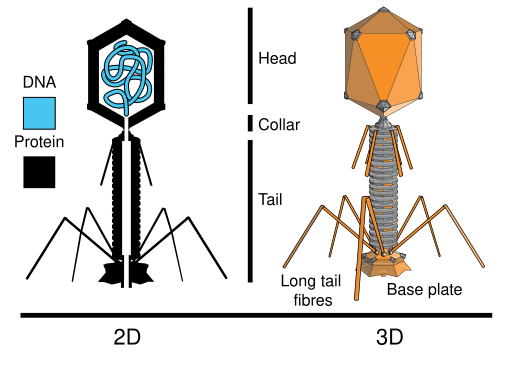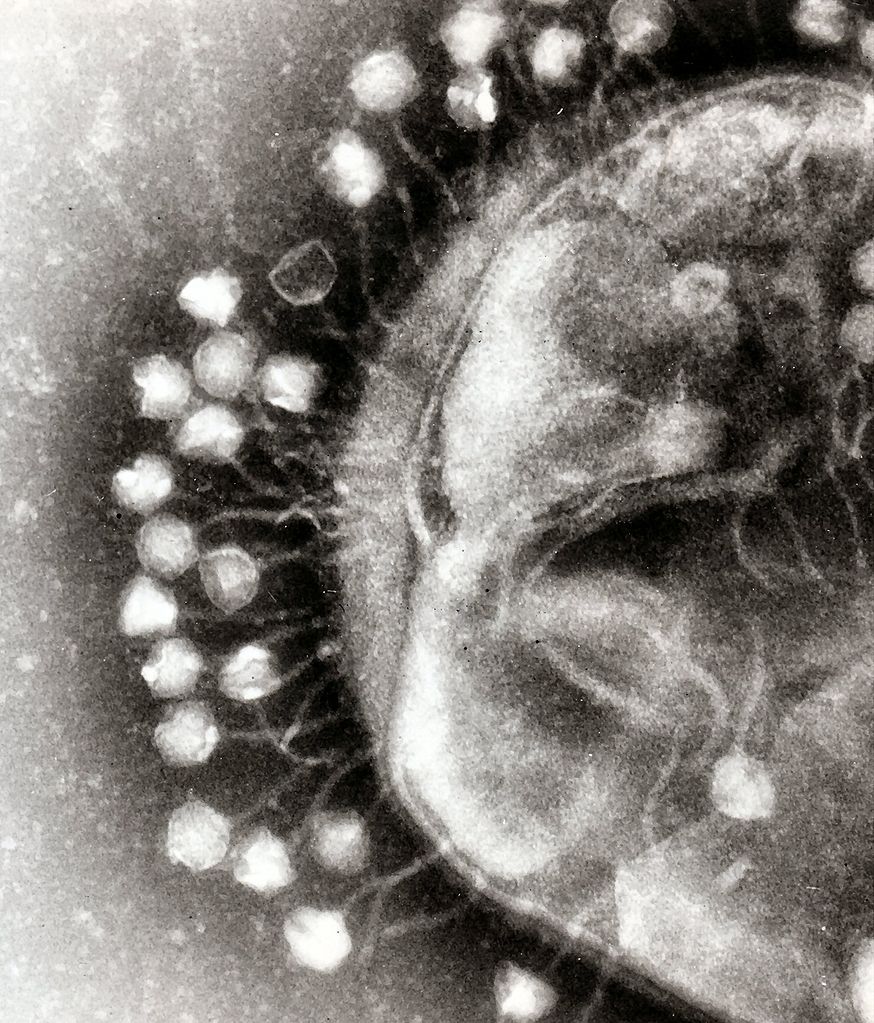Contents
Hershey and Chase
 Hershey and Chase studied bacteriophage (phage=eater). Phage are bacterial viruses that infect bacteria and cause lysis of the cells. They have a very simple structure of a proteinaceous head/collar/tail and a DNA core. It was known that bacteria infected with phage were resistant to additional infection. In 1952 Hershey and Chase grew T2 bacteriophage in conditions that would specifically label either the DNA or the protein with radioactivity. Bacteriophage infection results in the production of many new bacteriophage particles. When the life cycle enter the lytic phase, the virus particles erupt from the infected cell. This can be visualized on a lawn of bacteria where plaques form denoting the locations of burst bacteria. It was observed that some bacteria that did not undergo lysis but were infected would be resistant to further infection and later on undergo lysis. This latent phase of the bacteriophage life cycle was referred to as the lysogenic phase. The lysogenic phase implicated that the genetic material of the bacteriophage was “inherited” by the bacteria.
Hershey and Chase studied bacteriophage (phage=eater). Phage are bacterial viruses that infect bacteria and cause lysis of the cells. They have a very simple structure of a proteinaceous head/collar/tail and a DNA core. It was known that bacteria infected with phage were resistant to additional infection. In 1952 Hershey and Chase grew T2 bacteriophage in conditions that would specifically label either the DNA or the protein with radioactivity. Bacteriophage infection results in the production of many new bacteriophage particles. When the life cycle enter the lytic phase, the virus particles erupt from the infected cell. This can be visualized on a lawn of bacteria where plaques form denoting the locations of burst bacteria. It was observed that some bacteria that did not undergo lysis but were infected would be resistant to further infection and later on undergo lysis. This latent phase of the bacteriophage life cycle was referred to as the lysogenic phase. The lysogenic phase implicated that the genetic material of the bacteriophage was “inherited” by the bacteria.


Hersey and Chase subsequently took phage with radiolabeled DNA and infected bacteria. In parallel, they took phage with radiolabeled protein and infected another set of bacteria. After just enough time for infection, the bacterial cultures were placed into a blender to separate the bacteriophage from the bacteria.
Solutions were centrifuged to isolate bacteria from the phage. Bacteria were radioactive only when the phage grown in conditions to radiolabel DNA infected the bacteria to indicate that DNA might be the transforming agent.
What we know now
The Genome of the T2 bacteriophage (NC_054931.1) consists of 164kb of DNA.


Questions to think about:
- What isotope would be used to label protein?
- What isotope would be used to label just DNA?
References
- HERSHEY AD, CHASE M. Independent functions of viral protein and nucleic acid in growth of bacteriophage. J Gen Physiol. 1952 May;36(1):39-56. doi: 10.1085/jgp.36.1.39. PMID: 12981234; PMCID: PMC2147348.


